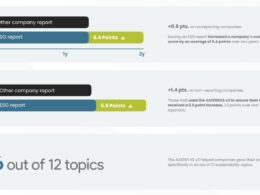The United Nations’ ‘Sustainable Development Goals (SDG) Report 2024’ highlights the significant global challenges in making meaningful progress toward the SDGs, based on the latest data and estimates. The report reveals both areas of setbacks and tangible achievements, such as reductions in global child mortality, improvements in HIV prevention, and better access to energy and mobile broadband. However, it emphasizes the urgent need to accelerate efforts in critical areas like climate change, peace and security, and inequality, which are undermining SDG progress.
With only six years remaining to meet the 2030 deadline, the report warns that current progress falls significantly short. Without substantial investment and scaled-up action, achieving the SDGs—designed as a blueprint for a more resilient and prosperous world—will remain out of reach. The lingering effects of the COVID-19 pandemic, rising conflicts, geopolitical tensions, and growing climate chaos have severely stalled advancements. The report outlines urgent priorities and actions required to fulfill the 2030 promise of ending poverty, protecting the planet, and ensuring no one is left behind.
The 2024 progress assessment reveals that the world is significantly off track in achieving the 2030 Agenda. Of the 169 SDG targets, 135 were evaluated using available global trend data from 2015 to the most recent year, alongside analyses from custodian agencies. However, 34 targets lack sufficient data or further analysis.
Among the assessable targets, only 17% show progress that is on track to meet the 2030 goals. Nearly half (48%) demonstrate moderate to severe deviations from the desired path, with 30% making only marginal progress and 18% showing moderate improvement. Alarmingly, 18% of targets have stagnated, while 17% have regressed below 2015 baseline levels.
This assessment highlights the urgent need for stronger and accelerated efforts to steer the SDGs back on course.
The assessment of SDG progress continues to face challenges due to gaps in data availability and timeliness across all 17 Goals. Despite this, significant improvements have been made in developing internationally comparable data for monitoring the SDGs. When the global indicator framework for the Goals was introduced in 2016, only about one-third of indicators had adequate data coverage (with data available for more than 50% of countries), and 39% lacked internationally recognised methodologies or standards.
Today, 68% of indicators have good data coverage, and since 2020, all 231 indicators have well-established and globally agreed methodologies. Trend data for 51% of the indicators, covering at least two data points since 2015, is now available for over half of all countries.
However, disparities in data coverage persist across the Goals, with notable gaps in critical areas such as gender equality (Goal 5), climate action (Goal 13), and peace, justice, and strong institutions (Goal 16). Data timeliness also remains a concern, as about one-third of indicators lack data from the past three years, limiting policymakers’ ability to make informed decisions and necessary adjustments.
“We have a rescue plan before us, in the [SDG Summit] political declaration. Now is the time to lift the declaration’s words off the page, and invest in development at scale like never before,” said António Guterres, Secretary-General, United Nations.






















